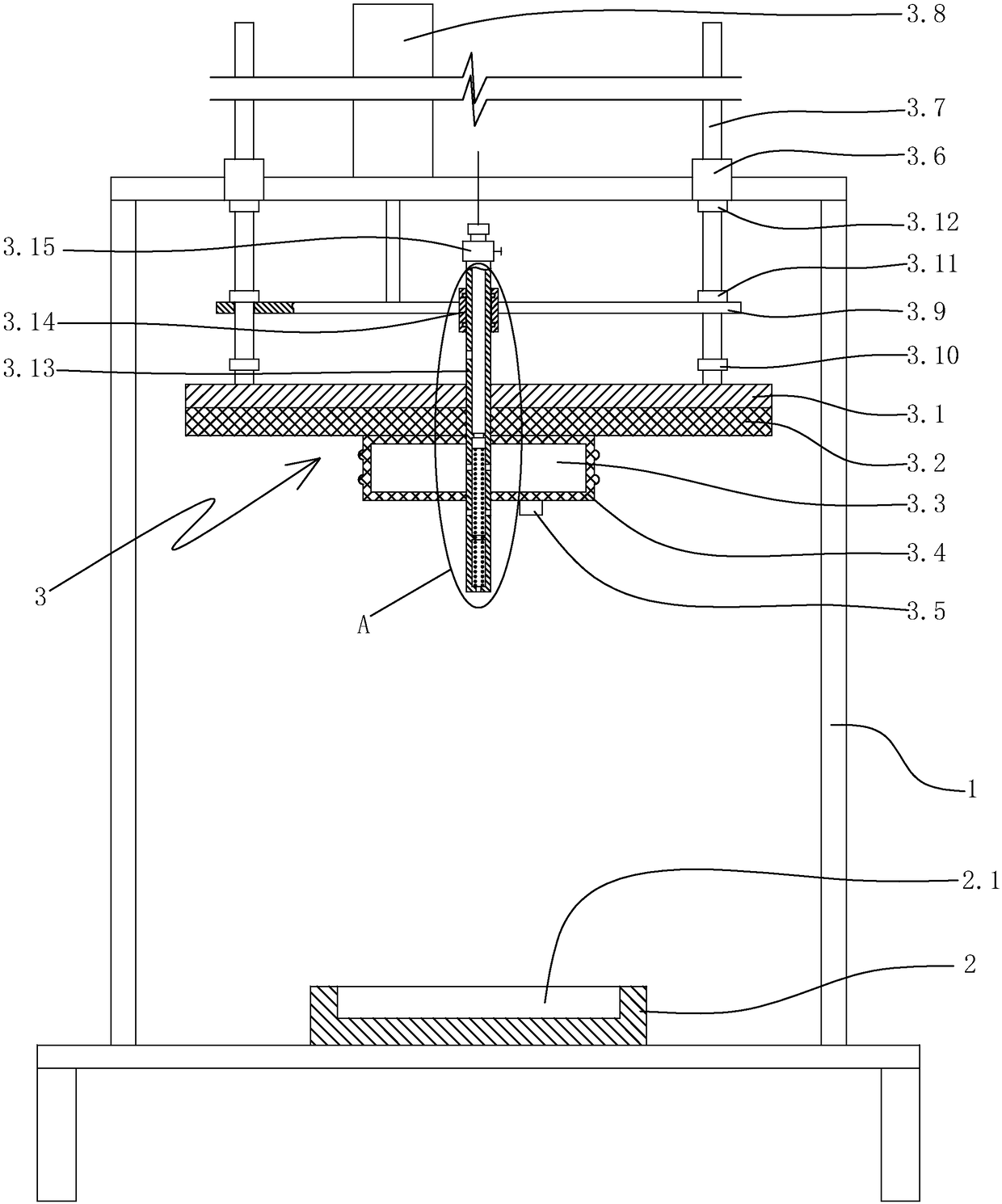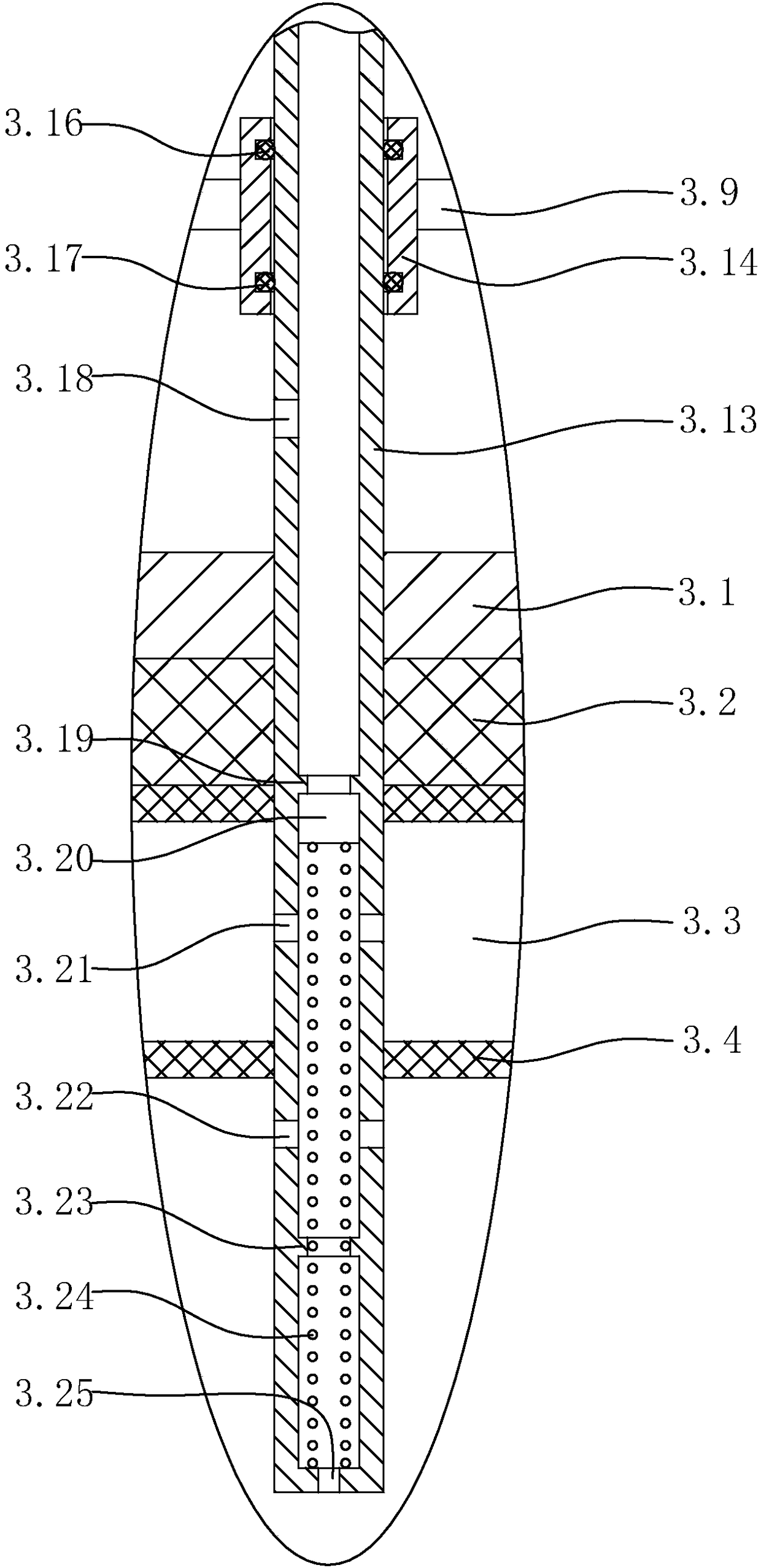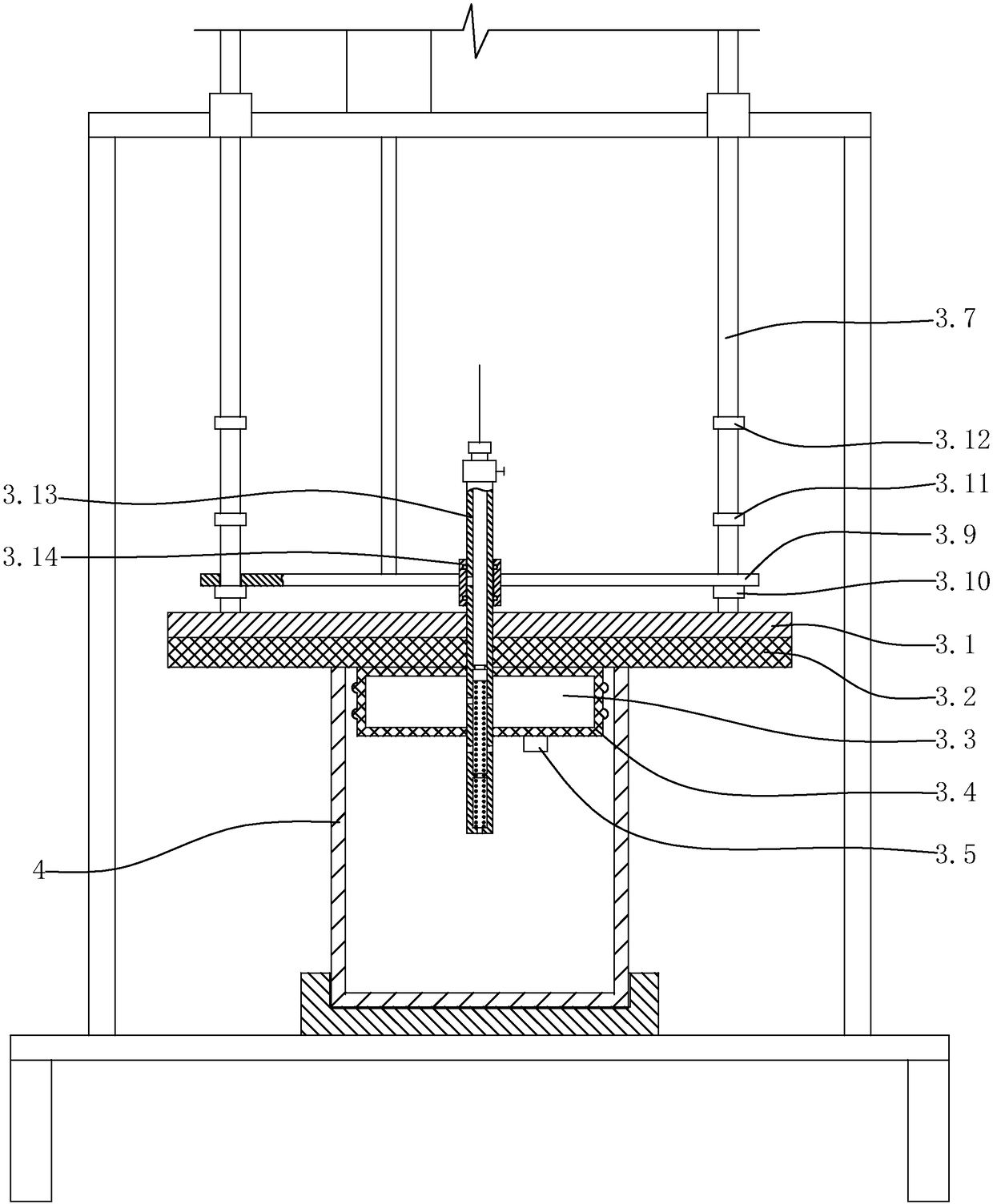Food can airtightness detection apparatus
A technology for testing equipment and food cans, which can be used in the use of liquid/vacuum for liquid tightness measurement, and by measuring the acceleration and deceleration rates of fluids, which can solve problems such as pollution, deterioration, and lower product qualification rates
- Summary
- Abstract
- Description
- Claims
- Application Information
AI Technical Summary
Problems solved by technology
Method used
Image
Examples
Embodiment Construction
[0022] Below in conjunction with accompanying drawing and specific embodiment the present invention is described in further detail:
[0023] Such as figure 1 As shown, a food can airtightness detection equipment includes a frame 1, a food can positioning seat 2 and an airtightness detection mechanism 3 arranged on the frame.
[0024] The upper surface of the food can positioning seat is provided with a food can positioning groove 2.1 for positioning the food can, and the bottom surface of the food can positioning groove is a horizontal plane. In this embodiment, the positioning groove of the food can is a circular groove.
[0025] Such as figure 1 , figure 2 As shown, the air tightness detection mechanism includes a booster pump, a horizontal pressing plate 3.1 positioned above the food can positioning seat, a vertical guide sleeve 3.6 arranged on the frame and above the horizontal pressing plate, arranged on the horizontal pressing plate and connected to the vertical The...
PUM
 Login to View More
Login to View More Abstract
Description
Claims
Application Information
 Login to View More
Login to View More - R&D
- Intellectual Property
- Life Sciences
- Materials
- Tech Scout
- Unparalleled Data Quality
- Higher Quality Content
- 60% Fewer Hallucinations
Browse by: Latest US Patents, China's latest patents, Technical Efficacy Thesaurus, Application Domain, Technology Topic, Popular Technical Reports.
© 2025 PatSnap. All rights reserved.Legal|Privacy policy|Modern Slavery Act Transparency Statement|Sitemap|About US| Contact US: help@patsnap.com



